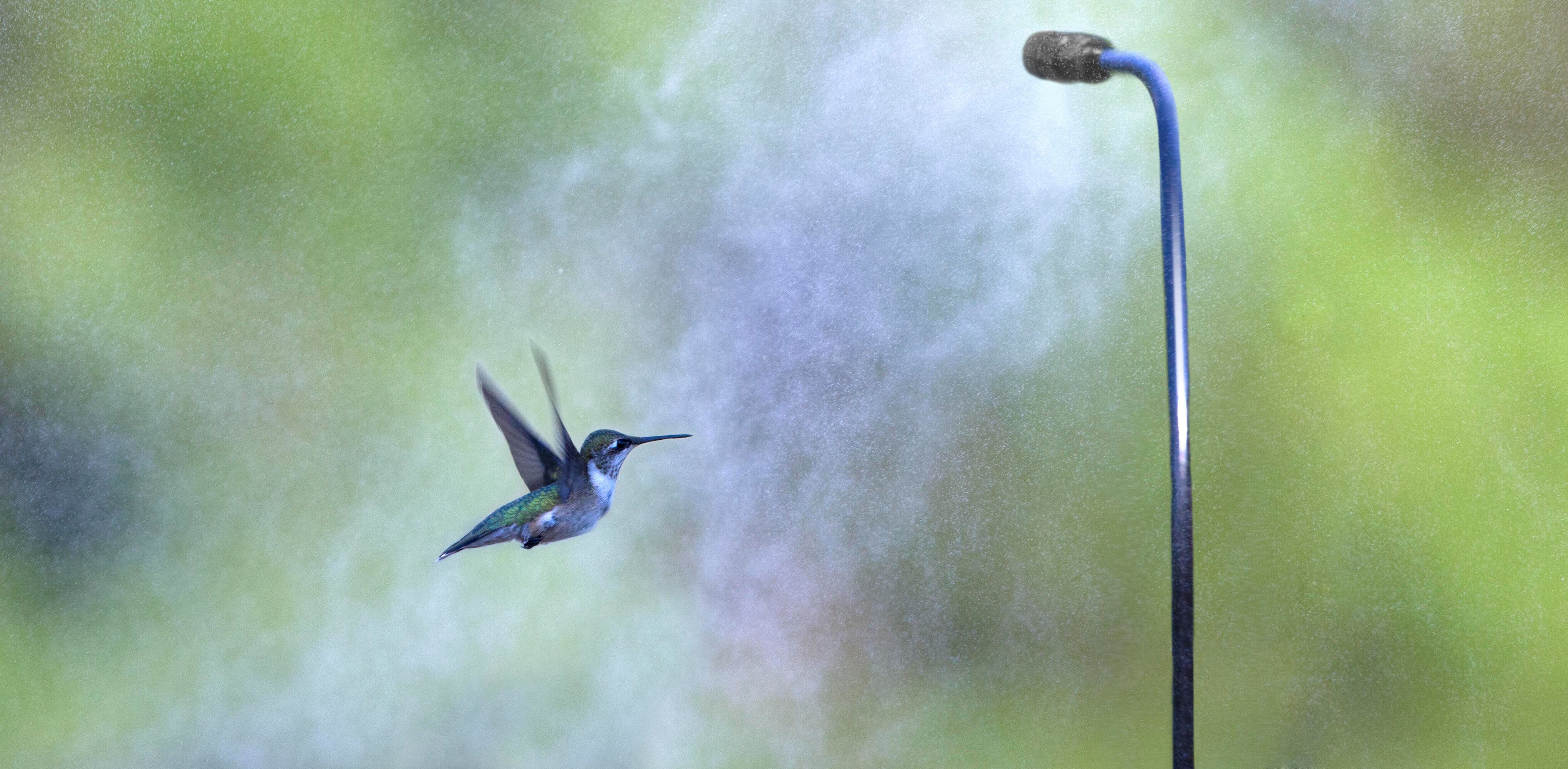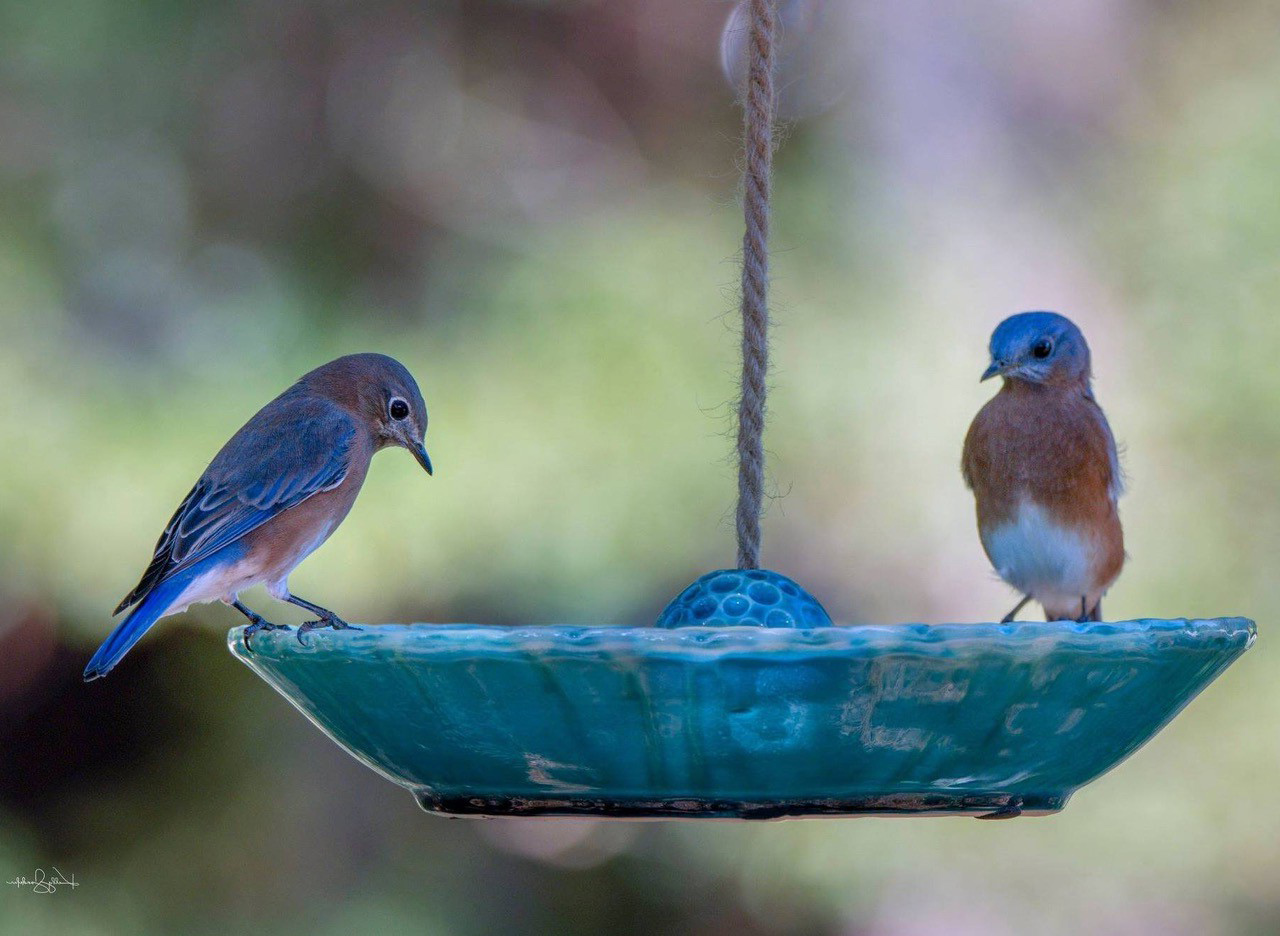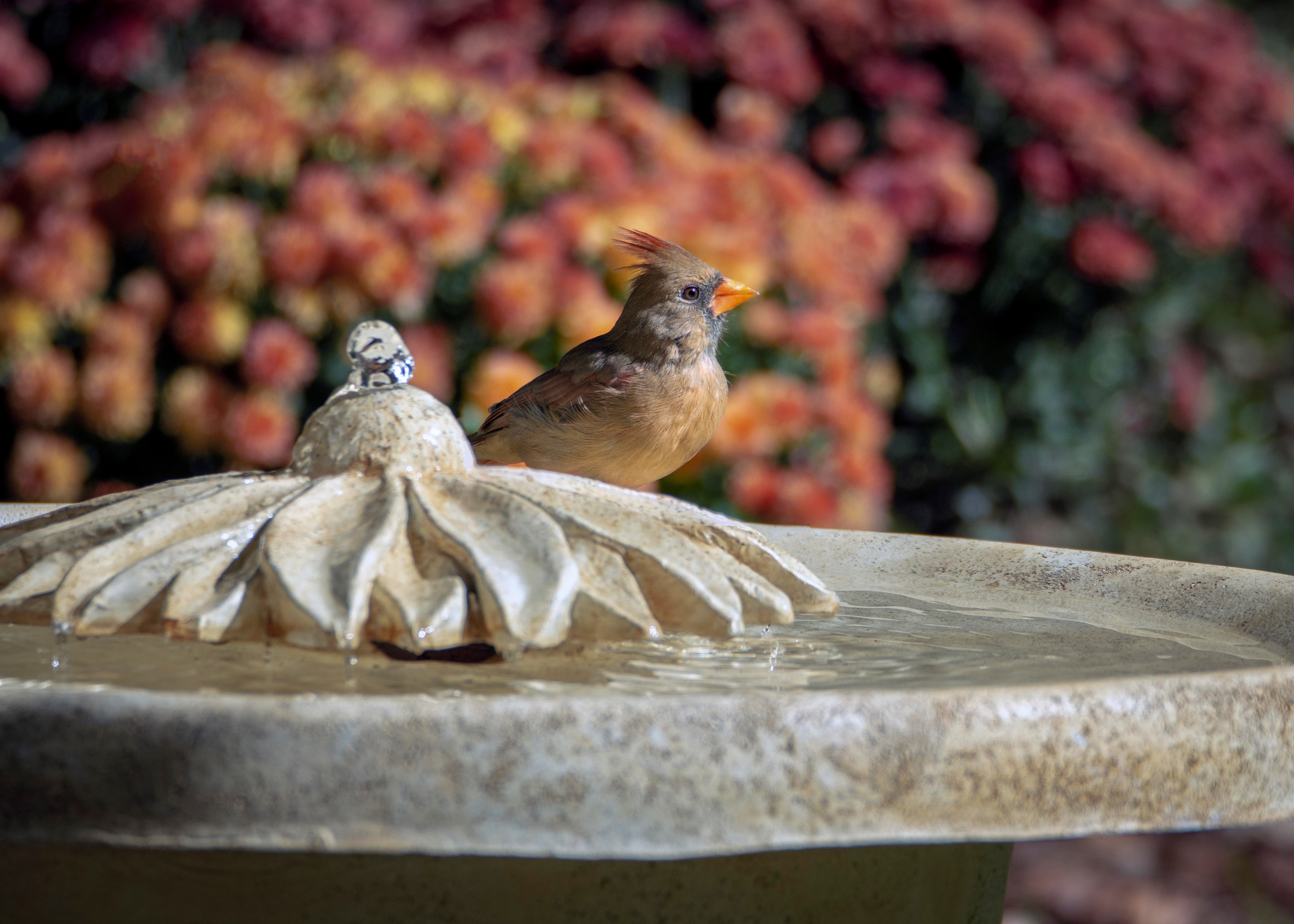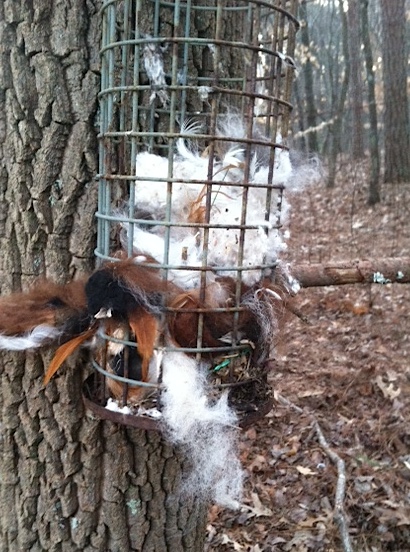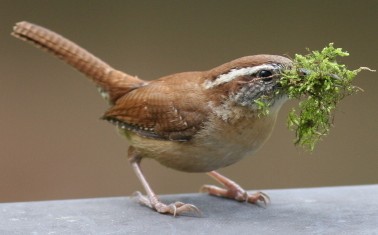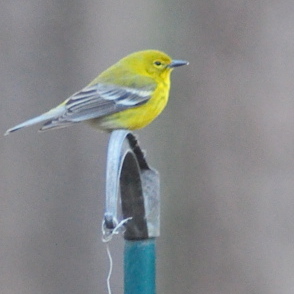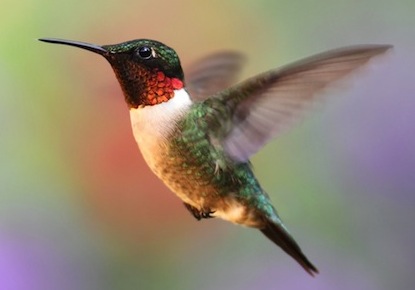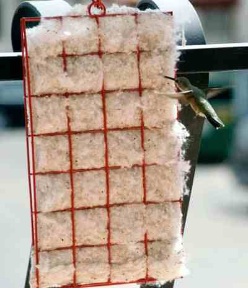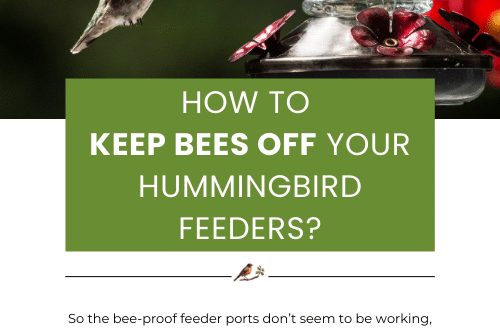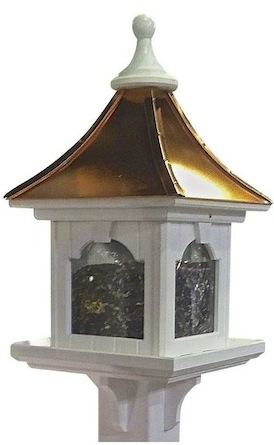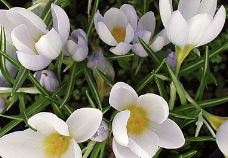-
Life After Death for a Tube Bird Feeder
Maybe it’s seen better life and about ready for the trash, but don’t toss that nasty old thing yet! There could still be purpose for an old tube bird feeder, especially if it’s the kind enclosed by a cage.
With bulbs a- blooming and buds a- popping, spring finally takes flight… at least in the southeast. It won’t be long for the rest of the country either, and oh what a welcome site it is! Cabin fever be gone, it’s gardening time, spring cleaning in the yard, and one of the best times for backyard bird action!
When sprucing up, don’t trash the debris either! Consider a small brush pile in one corner of your property, it not only provides shelter but food for birds and others to forage.
So back to the cage thing, it’s absolutely perfect for offering nesting materials. You can help birds feather their nests with a few common materials that may be on hand. Fido or fluffy? Save the hair, chickadees and titmice will line their nests with the soft fluff. Decorative mosses are really popular with Carolina wrens, jays and chickadees will use them too. Lots of folks use cotton yarn scraps, but if they’re dyed… I dunno? Same with dryer lint, it’s
not natural for birds, so we steer clear. Feathers of any kind (sans the dye) also help in construction of soft fluffy digs. Even birds who don’t use houses will benefit from readily available nest materials!
Don’t have one of those caged things on hand? Suet baskets are also ideal, and something like these spring feeders are perfectly versatile for year-round use. For fruit in summer, whole peanuts or suet in winter, and of course, nesting materials now. Happy Spring y’all!
-
Warblers be Gone- it’s Time for Hummingbird Feeders!
It’s time, farewell and see ya next year! Inundated every winter with pine warblers, it’s good to see them – and good to see them go as their journey North usually coincides with budding trees and blooming bulbs. This event can only mean other migratory birds are on their way, it’s really one of the best and busiest times for backyard birding!
Something about the start of nesting season and the return of hummingbirds that awakens the soul, just plain exciting for those who are really into their backyard beaked buddies 🙂
Because migration maps already show ruby-throated hummingbirds in the gulf states, they’re headed back to their favorite breeding grounds. If you saw the sprites at hummingbird feeders last season, there’s a strong likelihood they’ll return. Are you ready?
If you’re in the southeast, it’s time to dig out feeders and have them in place… this weekend would be ideal! Even if thoroughly cleaned prior to storage… rinse them well before filling. Since natural food sources are still rather scarce, sugar water can be a tad stronger. If using a commercial mix, use a little less water. If making your own nectar (highly recommended) use a 1:3 ratio. 1 cup plain table sugar to 3 cups of water. Migration is the only time nectar should ever be stronger than the standard 1:4 ratio, the extra calories serve tired and hungry birds well.
Consider some nesting material to further entice hummingbirds, after all they did come back to breed. The Hummer Helper Nest Kit was developed specifically for hummingbirds (although goldfinches like it too) and has been endorsed by Hummingbird Society president, Ross Hawkins.
Give tiny sprites a big welcome this year with freshly filled feeders and some nesting materials to help raise their families!
Check out the video and see it in use!
-
Post-Mount Hopper Bird Feeder Offers Major Curb Appeal
Larger seed feeders seem to be banished to the backyard, likely for the best viewing options. Sometimes on the side of a home, but you do occasionally see them in the front. Some folks may place a beautiful birdhouse in the landscape… simply for the aesthetic. But those who actually feed the birds are serious!
Gazebo style feeders offer a traditional architectural accent, some with Victorian flair, others even more creative. But the tube, the tube’s the problem for the serious backyard birder. They’re relatively small, holding maybe one or two pounds of seed. With winter still hanging on and natural food sources depleted, birds have been ravenous around feeders. And with spring bulbs already forcing through the ground, migratory friends will soon arrive (whether the weather cooperates or not!)
Enter the post-mount hopper bird feeder with ten-pound capacity and majestic appearance. A distinctive accent for the landscape, it’s definitely worthy of the front lawn. Because the roof is copper, and that’s actually vinyl/PVC (not wood) its appearance remains new. In fact it’s guaranteed against rotting, cracking or warping. Vinyl will not mildew, making it a healthier feeding surface for birds. Bacteria and mold have nowhere to settle, no deep, dark cracks or crevices in which to grow.
Hopper style feeders like these are one-time investments in the landscape with ideal functionality to entice feathered friends. They’re simple to fill, clean and are virtually maintenance-free. An aged patina finish is offered, as well as a hanging model. Lots of options with easy installation too – slides right on a standard 4×4 post, brackets included as shown.
Save 10% through 3/15. Use code MC10 and feed the birds in high style… now come on spring!
Hummingbird Feeders
about feeders & accessories

